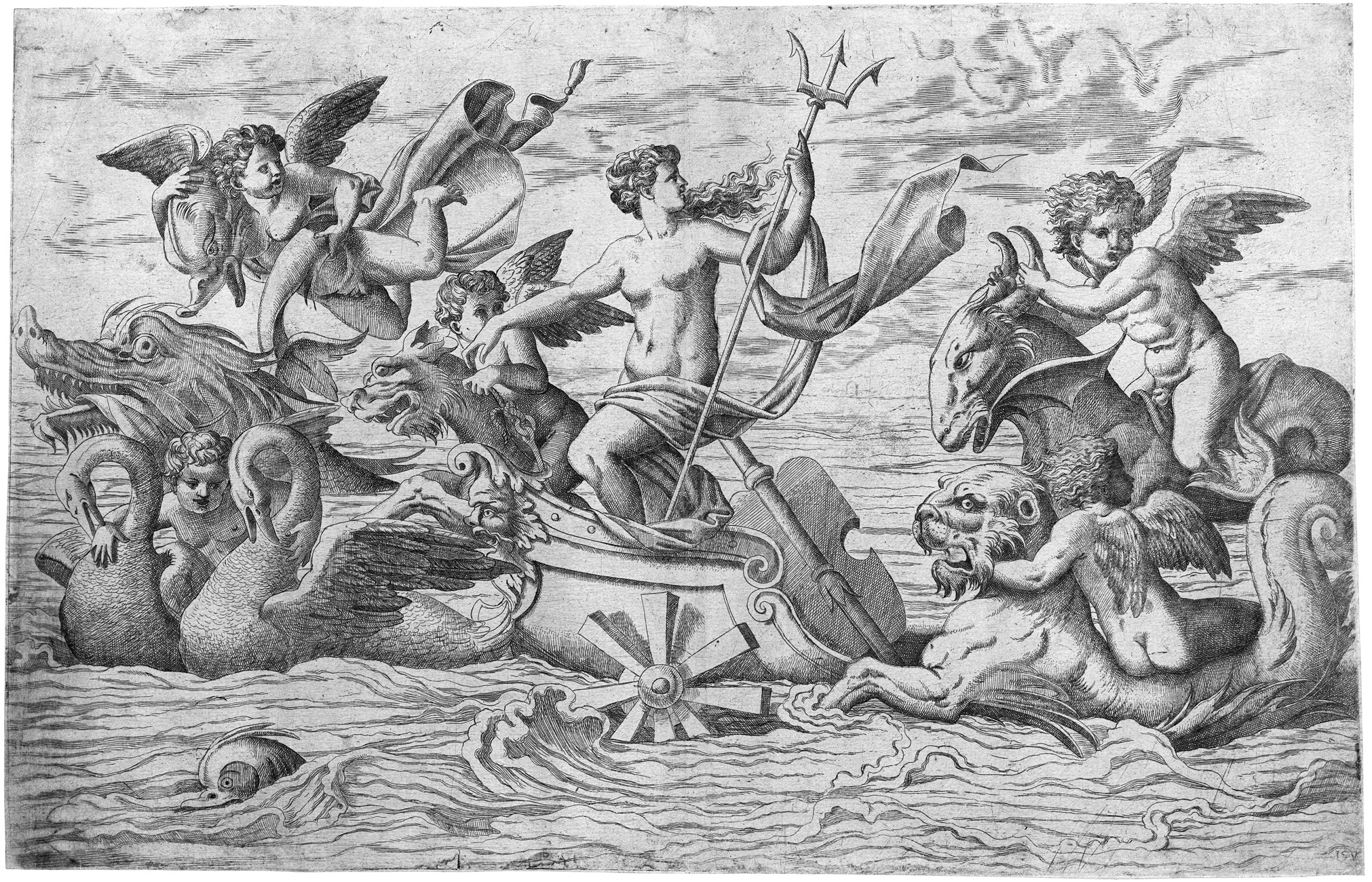Loading the page ...
Monogrammist IQV
(active in Fontainebleau around 1540–45)
Venus in a Chariot Drawn by Two Swans. Etching after Giulio Romano. 29.4 x 46.3 cm. Bartsch XVI, 372, 3; The Illustrated Bartsch 33 (16), 273, 3; Herbet 13.
The true identity of the Monogrammist IQV has not yet been completely clarified and his artistic personality remains largely hidden in the shadows. This circumstance makes the printed oeuvre of the experienced master all the more intriguing. While very few of the artist’s prints bear his monogram, he was nonetheless one of the most prolific printmakers of the Fontainebleau School. Adam von Bartsch recorded only seven etchings by the artist, but modern scholars assume that his printed oeuvre comprises some fifty prints, a number of which were earlier attributed to other artists. Many of his etchings are based on models by great masters of the Cinquecento, such as Giulio Romano, Polidoro da Caravaggio, Rosso Fiorentino and Francesco Primaticcio. The stylistically heterogeneous and often contradictory character of this master’s creations makes it difficult to precisely delimit his printed oeuvre. Hence, Herbet deserves credit for having contributed considerably to a more nuanced view of his activities. The etching style of the Monogrammist IQV occasionally resembles the method employed by Jean Duvet and Antonio Fantuzzi, while on other occasions he proves to be surprisingly original and artistically unconventional.
The present large etching has been executed in a light and brisk etching technique which is well suited to the delightful subject matter with its erotic undertones and lends the picture colour and atmosphere. Both Bartsch and Herbet name Giulio Romano as the author of the composition. The goddess of love is stood on a flimsy boat fitted with a paddle wheel and holds Neptune’s trident in her left hand. The vessel is drawn by two pretty swans with elegantly curved necks. Venus is escorted by a host of playful putti and fantastic sea creatures which are rendered with great verve and exuberance. The entire scene radiates gracefulness and artistic originality. The picture has latterly also been interpreted as the Triumph of Galatea. The fact that the young woman is looking backwards over her shoulder can be construed as a reference to Polyphemus, who had tried to kill Galatea’s lover, and was stopped by her in the attempt. Giulio Romano’s invention could have been inspired by his teacher Raphael and the latter’s famous Triumph of Galatea in the Villa Farnesina, on which the characteristic paddle wheel is also to be seen.
A very fine, crisp impression, printed with a delicate veil of tone, with thread margins around the partly inky platemark. The print is of great rarity. Two other impressions are in the Kunstmuseum Düsseldorf, Sammlung der Kunstakademie and the British Museum in London respectively.
